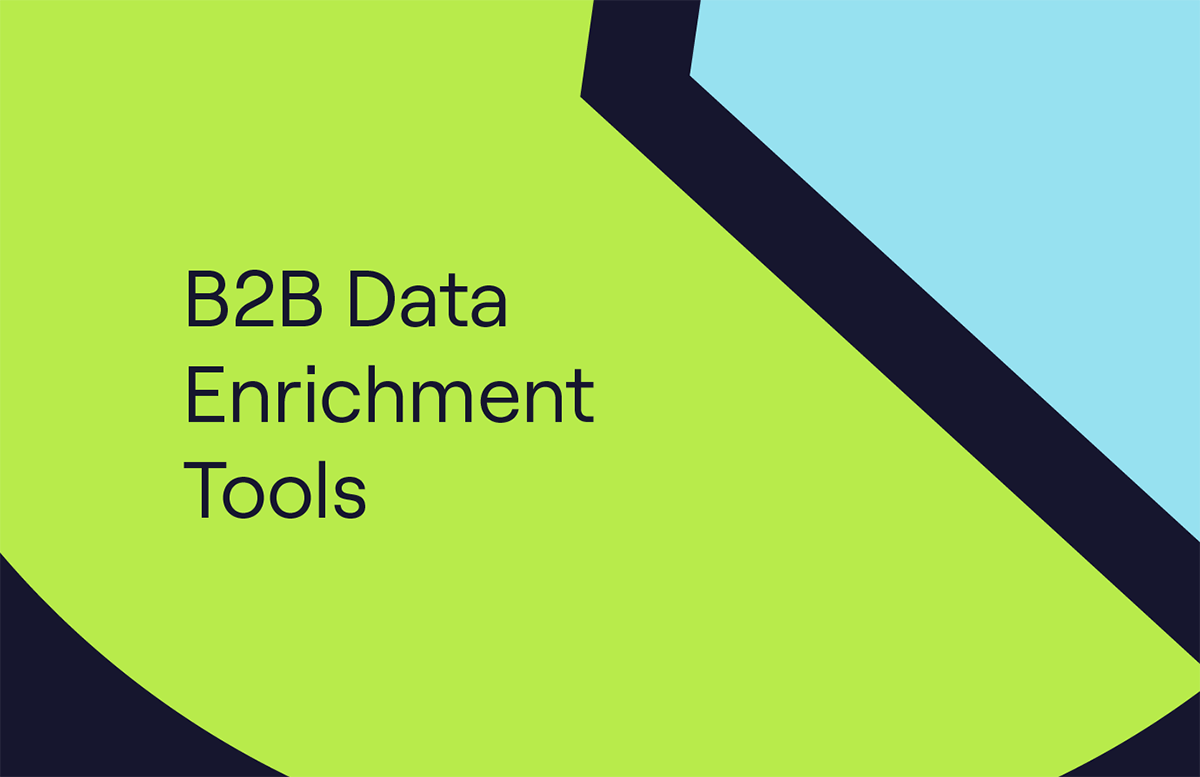Target Market Analysis: Strategies to Reach New Customers
Expanding into a new international market can feel like the ultimate growth move.
But without hard numbers on the size of the opportunity, along with who’s actually in it, you’re pretty much stepping off the plane with a blindfold on.
The reality? Many B2B companies underestimate how much their home-market assumptions skew their view of overseas potential.
They either overshoot by chasing an inflated Total Addressable Market (TAM), or undershoot by ignoring entire pockets of opportunity that don’t look like their current customer base.
That’s why target market analysis needs to come before the expansion budget is signed off. Done right, it tells you exactly how many accounts fit your ideal customer profile in a region, how reachable they are, and which ones are most likely to convert, before you hire, localise, or launch.
With Data-as-a-Service (DaaS), RevOps and GTM leaders can run this analysis with region-ready, enriched, and compliant data, building a TAM that’s not only accurate but also prioritised.
That means you can focus on the slice of the market where timing, fit, and signals align, and enter with eyes wide open.
TAM 101: More than just a big number
Total Addressable Market (TAM) is the total number of potential buyers who could ever purchase your product or service, assuming zero limits on geography, budget, or competition.
But in real-world GTM planning, that’s just the first layer. To turn TAM into something you can act on, you break it down:
- Serviceable Addressable Market (SAM): The portion of TAM that you can realistically target given your current product capabilities, delivery model, and support infrastructure.
- Serviceable Obtainable Market (SOM): The subset of SAM you could win in the short-to-mid term, based on competition, brand awareness, and resources.
- pTAM (prioritised TAM): The portion of your TAM ranked by buying signals, compliance readiness, and ICP fit; this is where DaaS really earns its keep.
In international expansion, target market analysis means running this layered view per region. What works in one geography will look completely different in another, not just in raw size, but in reachable size.
With the right DaaS partner, you’re not guessing those numbers; you’re pulling them from verified and compliant datasets that give you a true map of the opportunity ahead.
Antoine Cornet, Head of Revenue Operations at Cognism, said:
“One way we size new markets is by triangulating several data points. We might look at companies to see how big they are in a specific market versus their total revenue, then combine that with market size exercises and account-level data to get a realistic view.”
Why target market analysis is harder than you think
Sizing your target market at home is one thing. Sizing it across multiple countries, languages, and compliance regimes is a different game entirely.
In regions like the EU, your target market analysis has to account for:
- Market maturity: DACH might have high tech adoption in your category, while parts of Southern Europe are earlier in the curve.
- ICP match rate: Your home-market ICP may not translate directly. Roles, org structures, and buying committees differ.
- Data privacy and consent rules: GDPR is the baseline, but countries like Germany might add double opt-in rules, while France has more unique list requirements.
- Reachability gaps: Just because an account exists doesn’t mean it’s addressable. Many datasets miss opt-in status, current contact details, or localised job titles.
If you don’t account for these factors, your TAM numbers will become inflated. You’ll end up “counting” companies you can’t legally contact, or targeting personas who don’t influence buying in that region.
This is where Data-as-a-Service changes the equation. A strong DaaS provider gives you:
- Region-specific data enriched with local formats, languages, and compliance checks.
- Coverage across priority territories, so you can see exactly where addressable opportunities are concentrated.
- The ability to filter TAM by reachability and buying signals, giving you a pTAM view before you make any hires.
That means your expansion plans start with a realistic, actionable number instead of a spreadsheet full of false positives.
Antoine added:
“A common mistake is looking only at the size of an economy without considering what it’s made of.”
“For example, DACH is the largest economy in the EU, but much of Germany is manufacturing. If you sell to tech companies, a lot of that market isn’t relevant.”
How DaaS powers accurate target market analysis
Traditional target market sizing often happens in isolation. It’s a static research project that lives in a spreadsheet, disconnected from your team’s GTM tools.
With Data-as-a-Service, target market analysis isn’t a one-off exercise. It’s a live, integrated process that connects market sizing directly to your sales, marketing, and RevOps workflows.
Here’s how it works in an international expansion context:
1. Define your regional ICP
Start with your global ICP and refine it for each target market, adjusting for role naming conventions, company sizes, and industry segments specific to that region.
A DaaS platform ensures these filters map to real-world, region-ready data.
2. Map the full TAM
Pull all accounts matching your ICP from verified, compliant datasets.
Include location accuracy, local address formatting, and translated job titles to avoid false positives.
3. Layer on reachability
Filter out accounts without valid, compliant contact data.
This turns your TAM into a reachable TAM, removing the risk of building territory plans around unreachable buyers.
4. Prioritise with pTAM
Apply buying signals (intent) and contextual signals (funding, hiring, tech changes) to rank accounts.
This is the bridge between “market size” and “market action.”
5. Integrate into GTM systems
Feed your prioritised TAM directly into CRM, sales engagement, and marketing automation tools.
Keep it fresh with real-time updates, so your market view is always current, not six months old.
By running target market analysis in this way, GTM leaders get more than just a big number; they get a scalable, data-driven playbook for where to focus first, even in regions where they’ve never sold before.
Antoine said:
“For us, TAM isn’t just how many accounts exist.”
“It’s how many fit our ICP and are actually worth going after, things like having an SDR team, using certain tech, operating in the right industries. In some markets, that might be a thousand accounts, in others, far fewer.”
The risks of skipping or rushing target market analysis
International expansion without accurate target market analysis is like building a sales plan on quicksand.
You risk:
- Overestimating demand: Hiring too many reps for a market that’s smaller than expected.
- Underestimating opportunity: Ignoring segments that don’t mirror your home ICP but have high conversion potential.
- Wasting resources: Chasing unreachable or non-compliant accounts.
- Damaging brand trust: Breaking local outreach rules and burning relationships before they start.
The right target market analysis, backed by live, compliant DaaS data, gives you a safety net. It ensures every expansion decision, from headcount to budget allocation, is grounded in reality, not assumptions.
Building target market analysis into your expansion workflow
The smartest GTM teams don’t treat target market analysis as a one-off research project. They build it into their ongoing expansion workflow, so market size, reachability, and prioritisation are always current.
Here’s how that looks in practice:
- Quarterly refresh: Run a complete TAM update for each priority region to capture company changes, contact turnover, and new compliance rules.
- Signal monitoring: Layer in intent and contextual signals continuously, so pTAM rankings adapt in real time.
- Territory planning: Use updated TAM data as the base for rep assignments, avoiding overlaps and missed accounts.
- Campaign alignment: Feed pTAM accounts into marketing for hyper-targeted, region-specific plays.
With DaaS, all of this happens inside your live GTM systems. There is no manual list building and no static exports that go stale before they’re used.
Why DaaS is the shortcut to pTAM
A spreadsheet might tell you your Total Addressable Market, but it won’t tell you which accounts are worth pursuing first, or whether you can actually reach them.
That’s where prioritised TAM (pTAM) comes in, and where DaaS takes you there faster.
With a top DaaS platform, your pTAM is built from:
- Unmatched EMEA coverage: Millions of European contacts, with strong accuracy across DACH, France and beyond.
- Phone-verified data: Mobile numbers validated by humans, so reps connect much more often.
- Compliance by default: Compliant records, cross-checked against Do Not Call lists.
- Real-time updates: Job changes, funding rounds, and hiring signals that reshuffle your priorities daily.
This means your prioritised TAM isn’t just a theoretical model, it’s an actionable, compliant list of high-potential accounts, ranked by who’s most likely to convert now.
And when it’s integrated directly into your CRM and sales engagement tools, pTAM becomes part of your GTM rhythm, helping you expand into new regions with speed, focus, and confidence.
From market guesswork to measurable wins
Expanding into a new region is never just about getting boots on the ground. It’s about knowing the market before you invest, who’s in it and who you can reach, but also who’s most likely to convert right now.
Too often, target market analysis gets treated as a one-off research task, filed away in a deck, and forgotten until the next big planning session.
The problem? Markets don’t sit still. People change jobs. Companies get funded. New regulations come into play. By the time static TAM data is put into action, the reality on the ground may look very different.
Data-as-a-Service changes that. It makes TAM, and of course pTAM, a living part of your GTM workflow. You can see your potential market in real time, filter it down to reachable, compliant accounts, and layer in buying signals that show exactly where to focus first.
With a platform like Cognism, your TAM is more than a number; it’s a strategic asset you can act on immediately, refined by accurate coverage, phone-verified data, and region-specific compliance.
In a competitive and highly regulated region like the EU, that’s not just a nice-to-have. It’s the difference between making a costly leap of faith and executing a confident, well-timed market entry.
Antoine said:
“Accurate target market analysis gives you confidence in your decisions, from whether to enter a region at all, to how many reps to hire.”
“Without it, you’re making bets based on assumptions, not reality.”
When you know your market before you make the jump, you’re not just expanding, you’re setting up to win.


/csv%20enrichment/csv-enrichment-card.webp)
